As a long-time owner of bearded dragons, these docile and easygoing lizards have become more than just pets; they’re a joy to watch and care for.
Ensuring their basic needs are met, especially regarding their enclosure, has always been my top priority. I’ve learned that at night, it’s essential to mimic their natural environment by turning lights off, allowing the tank to cool, but not too cold.
Whether or not to provide additional heat truly depends on where you live and how much your house’s temperature drops. In areas where it falls below 65 °F, the risk of illness or brumation increases, making it recommended to use ceramic heat emitters or heat mats. This was a surprise to me at first, given their daytime temperature needs, but it’s crucial to have these requirements observed carefully, particularly in cold areas.
Table of Contents
Do Bearded Dragons Need Heat At Night?
As a proud owner of a bearded dragon, I’ve learned that these animals have basic temperature needs that must be met to thrive. Being cold-blooded ectotherms, they rely on external sources like basking lamps to thermoregulate, unlike warm-blooded animals that control their body temperature internally.
In their arid, desert-like regions of Australia, they bask in warm conditions by day and tolerate the temperature swing as the sun goes down, a cycle I strive to replicate in my enclosure. Nighttime heating becomes a consideration based on how temperate climates or glass walls of a vivarium act as a natural insulator, maintaining temperatures and reducing the temperature drops at night.
It’s fascinating to observe how they move from the hot to the cooler side of the enclosure to stay comfortable, showing their adaptability. In the wild, these reptiles face no problem experiencing a 20 to 30-degree decline in nighttime temperatures, but in captivity, ensuring a precise temperature gradient and considering nighttime heating is crucial to mimic their natural habitat and keep them healthy.
TIP: Usually, they don’t need it. But it really depends on your location and how much the temperature drops in your home during the night.
The Exception To This Rule
The rule of thumb for keeping your beardie cozy suggests that heat at night might not always be necessary, especially if temperatures don’t drop below 65 degrees Fahrenheit. From my experience, it’s wise to invest in a high-quality digital thermometer to monitor temperature changes in the area regularly, rather than solely relying on outside temperatures.
Note: Your home’s heating system and the residual warmth from lights can often keep your bearded dragon’s habitat sufficiently comfortable, even when it’s freezing temperatures outside. However, to truly understand your pet’s needs, it’s crucial to test the in-tank temperatures and adjust accordingly.
Night Temperatures for Bearded Dragons
In the cozy confines of my living room, where my bearded dragon’s cage sits, I’ve always been mindful of the temperatures crucial for these reptiles to thrive. Guided by a care sheet from the NC State Veterinary Hospital, I maintain the enclosure’s background temperature in the low 80s Fahrenheit, ensuring a comfortable basking area between 95 and 105 degrees. This allows my lizard to freely move and regulate its body heat, akin to its nature in the wild.
As night falls and the house cools, especially in captivity, it’s essential to not let the temperature drop below the 70s. During the Daytime, I diligently maintain the habitat between 75-85°F (24-29°C), with the Basking spot kept at 88-100°F (31-38°C). Even at night, I ensure it doesn’t dip below 70-75°F (21-24°C), mirroring the gentle drop they’d experience in the wild.
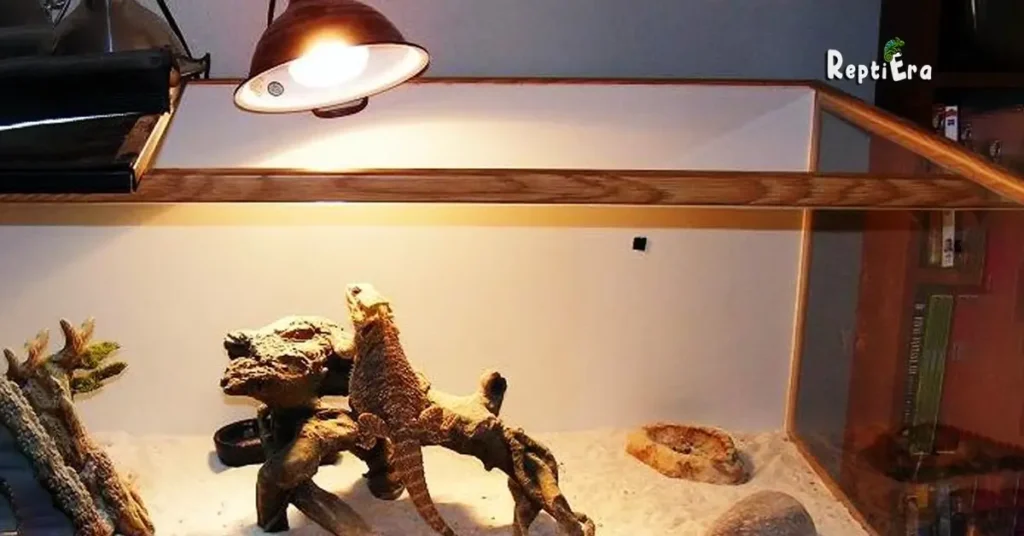
Bearded dragons are okay with temperatures down to 65 degrees Fahrenheit, but they’re happiest when it’s above 70 degrees. Ideally, the temperature should drop below 70 degrees only sometimes at night. If it’s often colder than 70 degrees, you might want to consider getting extra heating.
Reflecting on my journey with my bearded dragon, I’ve come to appreciate the delicate balance required to mimic their natural environment from their origins in the semi-desert environment of the wild. During the peak of the day, their temperature on a sun-exposed surface can soar to 100 degrees F, yet they find respite in shady spots that don’t exceed 85 degrees.
Creating a similar temperature gradient in their cage has become my duty, ensuring they can cool down and sleep comfortably, akin to their natural pattern. It’s crucial, especially when night temperatures are lower than 65, as it could cause problems, making them ill with conditions like respiratory infections or mouth rot.
Consistently cold temperatures might even trigger brumation, leaving them lethargic for months. However, these creatures are tougher than they seem, tolerating extreme temperatures with an innate capacity to thermoregulate. My study and experiences have proved that despite their thermal requirements, even those with smaller or fewer scales, regardless of age or health disposition, can adapt well to their environment given the opportunity.
Creating the Ideal Habitat
In Creating the Ideal Habitat for a bearded dragon, one must draw inspiration from their native arid, semi-desert regions of Australia, where they bask in the sun atop a rock or branch by day, and seek shelter for sleeping at night. These diurnal lizards are active during hot, sunny days and accustomed to cooler nights, a cycle we strive to duplicate in captivity to foster a healthier lizard.
Recognizing their ectothermic nature, which relies on external sources to regulate internal body temperature, it becomes clear why heating and a temperature gradient in the enclosure are of such importance. This gradient allows them to choose between hot, warm, and cool areas to warm up or cool down, crucial for their ability to digest food and avoid health issues.
As sun worshippers, the heat and light sources we provide are paramount to the well-being of this species, making the creation of a suitable habitat a blend of science and art, ensuring they thrive even in a captive environment.
How To Keep Bearded Dragons Warm At Night
To ensure your bearded dragon stays warm through the night, especially when temperatures in the area could dip below 65 °F, considering supplemental heating is key. In my setup, I use an infrared thermometer—recommended for its accuracy and wide temperature range—to check the temperature within the tank before I turn in for the night.
Many reviews suggest that measuring temperatures across different parts of the tank helps in maintaining an optimal environment in personal reptile tanks. While lights are commonly used, it’s vital to avoid those that emit blue light or act as an infrared bulb, which could disrupt your beardie’s night cycle.
Related Post: HOW FAST CAN A BEARDED DRAGON RUN?
Instead, opt for heating solutions that won’t cause harm or overly heat the enclosure, ensuring your beardies remain comfortable and safe.
1. Infrared Bulbs
Infrared bulbs are a go-to for heating my bearded dragon’s enclosure at night, providing a temperature boost without the high costs. These bulbs are not only cheap and easy to find, but their low-wattage design produces just enough heat with minimal light, ensuring my bearded dragon stays comfortable without disrupting its sleep cycle.
The light they emit is dim, often in purple or red colors, casting a gentle cone of light that’s subtle enough not to ruin the night’s rest. This setup allows me to observe my lizard throughout the night without startling it, making these bulbs a low-cost alternative to pricier products while still maintaining the ideal warmth.
2. Ceramic Heat Emitters
In my quest to create the perfect environment for my bearded dragon, I’ve found that ceramic heat emitters are a game-changer. Unlike traditional bulbs, these emitters are designed to emit only heat, not light, making them ideal for night use.
Inside, an electric wire is coiled within the ceramic, a superb thermal conductor, ensuring the heat is produced evenly across the entire bulb. This setup draws power from a standard light socket, yet it’s uniquely unaffected by a sudden drop in temperature, maintaining a consistent warmth within the enclosure without disturbing my pet’s natural nocturnal cycle.
How To Set Up: In my guide to providing the best heat lamps for beardies, I’ve learned that a ceramic heat emitter is a crucial component. These emitters heat up fast and can be easily screwed into a standard E26 lamp base, making them versatile for any light socket. Many owners, including myself, have found success in swapping out the basking light for a heat emitter during nighttime, ensuring our scaly friends stay warm without the bright light.
For those with a dual dome lamp fixture, it’s convenient to use one slot for daytime light and the other for the heat emitter, seamlessly transitioning from day to night. This setup does the job perfectly, maintaining an ideal temperature gradient without disturbing the natural cycle of our beardies.
Avoid using heat rocks as they can accidentally burn your bearded dragons if they touch them and the rocks are too hot.
3. Heating Mats
Exploring heating options for my bearded dragon, I discovered that a heating mat is a fantastic accessory, with built-in heating elements designed for safety and efficiency. Unlike heat-emitting rocks often seen at the local pet store, which can pose a safety issue if bearded dragons sit on them and fail to realize they’re too hot, leading to potential burns, heating mats offer a safer alternative.
I installed mine underneath the enclosure or along the sides, ensuring it doesn’t contact any flammable surfaces. This design allows my bearded dragon to feel the heat from above, mimicking their natural environment. It’s crucial to be mindful of the placement and follow safety precautions to keep the habitat warm at night without any problem. This way, my dragon can choose its preferred temperature spot, ensuring comfort and warmth throughout the night.
Question: “I recently got a one-year-old bearded dragon as a pet. I keep a heat lamp on during the day, but I’m curious if it’s necessary to leave it on overnight. Should a bearded dragon have heat during the night?”
The short answer: If the room with the habitat gets too cold at night, you may need to add extra heat to ensure your lizard stays warm. However, if the room remains cozy at night, your bearded dragon probably won’t require additional heating after dark. Keep reading to find out more.…
How To Set Up: In setting up my bearded dragon’s habitat for optimal warmth, I found that a heating mat is highly recommended for its efficiency and safety. I positioned it at the desired placement directly under the tank, ensuring it was set to the desired heating temperature using a digital thermostat for precise control. After plugging it into an outlet, I noticed the rubber feet on the mat, a thoughtful design to elevate it slightly off the surface, allowing any excess heat to escape and prevent overheating. This setup has been effective in maintaining a consistent and safe temperature in the enclosure.
Important note: Be careful not to overheat the enclosure with extra heating at night. The night temperature shouldn’t match the daytime warmth, as this won’t allow your bearded dragon to manage its body temperature correctly. Using a timer is a smart move.
4. Heated Cables
Exploring various heating solutions, I’ve incorporated heated cables into my bearded dragon’s vivarium, a method preferred by many reptile enthusiasts for its versatility. Unlike the traditional ceramic bulb or heating pad, these cables consist of a heating element that is insulated and resistant to water damage, making them ideal for a high-humidity habitat.
Their flexibility in placement allows me to create large loops or tight coils within the enclosure, or even lay them externally beneath a mat, to deliver consistent heat throughout the night. This setup ensures my dragon stays warm without direct contact that could potentially harm it.
How To Set Up: You can arrange it in spirals or circles within the tank, or attach it outside the tank like a warming mat, securing it with electrical tape. Simply plug it into a power source to activate it.
Do Baby Bearded Dragons Need Heat At Night?
When it comes to baby bearded dragons, I’ve noted their heating requirements are a tad more stringent than those of an adult bearded dragon. The ambient temperature within their tank should be meticulously maintained, with a basking spot at 95-110 °F and a cool area ranging from 80-95 °F.
As for heating at night, in a cold area, ensuring the temperature doesn’t fall below 70 °F is crucial to prevent them from getting sick. The safest night temperature for these juveniles hovers between 72-80 °F. They can withstand a dip to 70 °F, but should you notice the temperature falls consistently to this threshold, it’s wise to employ supplemental heating to keep them in optimal health.
Expert Tip: It’s smart to be extra careful with baby bearded dragons. Young ones, like hatchlings and juveniles, don’t have strong immune systems like adult ones do. This makes them more prone to getting sick, and cooler night temperatures can increase this danger.
Why Bearded Dragons Need to Be Warm Enough At Night
Understanding why it’s important for bearded dragons to be warm enough at night stems from witnessing the adverse effects of improper environmental factors on these creatures.
Bearded dragons can tolerate a cool night, but a significant drop in temperatures can lead to health problems such as respiratory and viral infections. I’ve seen how a decrease in warmth can cause them to shut down and enter a conservation mode, making it difficult to wake up even as the sun rises. This biological shutdown isn’t just about sleep; it affects their daytime activity, leading to extreme lethargy and loss of appetite.
To address these issues and prevent severe health problems, I’ve learned the importance of raising the temperature in their enclosure at night, sometimes even giving a warm bath or ensuring the basking light is positioned correctly. Without such action, a beardie’s body may require veterinary intervention to recover from the cold’s effects.
Related Post: WHY DO BEARDED DRAGONS PUFF UP?
When You Might Need a Nighttime Heating Device
Deciding whether your bearded dragon needs heat at night truly depends on your housing situation. In a room where temperatures comfortably hover in the low to mid-70s F, your lizard may fare well without additional nighttime heat.
However, when the habitat room dips into the 60s Fahrenheit or lower, it’s wise to consider a low-wattage heat lamp to elevate the cage temps. Opting for a heating bulb specifically labeled as a nighttime heat lamp, such as an infrared or moonlight bulb, is crucial. These reptile heating bulbs are designed not to emit white light that could disrupt your pet’s day and night sleep patterns.
Steering clear of a regular incandescent bulb is important to maintain a distinction between daytime and nighttime in their habitat, ensuring their comfort and well-being.
FAQs
What is the ideal temperature gradient for a Bearded dragon?
For a Bearded dragon, the optimum temperature gradient in their enclosure is vital for their well-being. The basking area should be maintained between 40-42°C (104-107°F), allowing them to soak up the necessary heat. Conversely, the cool end of their habitat should stay cooler, within 22-25°C (71-77°F), to provide a required range for proper thermoregulation. This thermogradient ensures they can move and regulate their body temperature efficiently.
How cold is too cold for a Bearded dragon?
For a Bearded dragon, the cool end of their enclosure should not drop below 22°C (71°F), ensuring their environment remains suitable. The basking area must consistently remain at a warmer 40-42°C (104-107°F) for optimal health. Overnight, these reptiles can comfortably drop to about 15°C (59°F), as the temperature drops naturally, providing some leeway in managing nighttime temperatures compared to the day.
Can I use a mercury vapor bulb for my Bearded Dragon heating system?
Using Mercury vapor bulbs in your Bearded dragon’s vivarium can be tricky; they produce both heat and UVB rays with great efficiency but can’t be controlled by a thermostat. Adjusting the temperature involves physically raising or lowering the bulb to target the ideal basking area. However, they tend to overheat in enclosed set-ups, making them unsuitable for a typical Bearded dragon habitat, whereas they might work better in open set-ups like tortoise tables.
Is there anything else I can do to maintain my Bearded dragon’s basking temperature?
To maintain your Bearded dragon’s basking temperature, I recommend a wooden vivarium as wood tends to retain heat better than other materials like glass. Incorporating basking rocks into the basking area can help absorb heat and maintain a higher surface temperature compared to the substrate alone. However, it’s crucial to avoid using an electrical heat rock, as it produces its own heat and can easily overheat, potentially leading to burns.
How do I know if my bearded dragon is warm enough?
To determine if your beardie is warm enough, observe its behavior in the focal basking hot spot, ideally between 100 to 110 degrees Fahrenheit. If it’s sitting in the hot spot with its mouth open, it’s likely gaping to regulate its body temperature, indicating it’s hot enough. The entire habitat shouldn’t be as hot as the basking area, which is necessary for their proper digestion.
Is it OK to leave a heat lamp on overnight?
Leaving a heat lamp on overnight for a bearded dragon can be safe if it’s designed to be used outside or in outdoor-like conditions, protected from wind and weather. However, it’s essential to avoid placing it out of sight and to always monitor its use, ensuring there’s a working smoke detector nearby for added safety.
How do I keep my bearded dragon warm without a heat lamp?
To keep your dragon warm without a heat lamp, consider wrapping it in blankets to utilize your body heat. For a quick warm-up, especially during short-term power outages, placing your dragon in a car with the heat on high can be effective. Be cautious with feeding during these times, as they may have trouble digesting without their usual basking lamp.
Conclusion
In conclusion, maintaining the appropriate warmth for bearded dragons during the night is crucial for their health and well-being. Whether using infrared bulbs, ceramic heat emitters, or heating mats, it’s important to ensure the habitat remains within the safe temperature range, especially for more vulnerable baby bearded dragons. While mercury vapor bulbs offer efficiency, they may not be suitable for all setups due to their inability to be regulated by thermostats.
Alternative warming methods, such as wrapping the dragon in blankets or utilizing car heating, can provide temporary solutions during power outages. Ultimately, careful monitoring and the right equipment are key to providing a comfortable and safe environment for bearded dragons throughout the night.

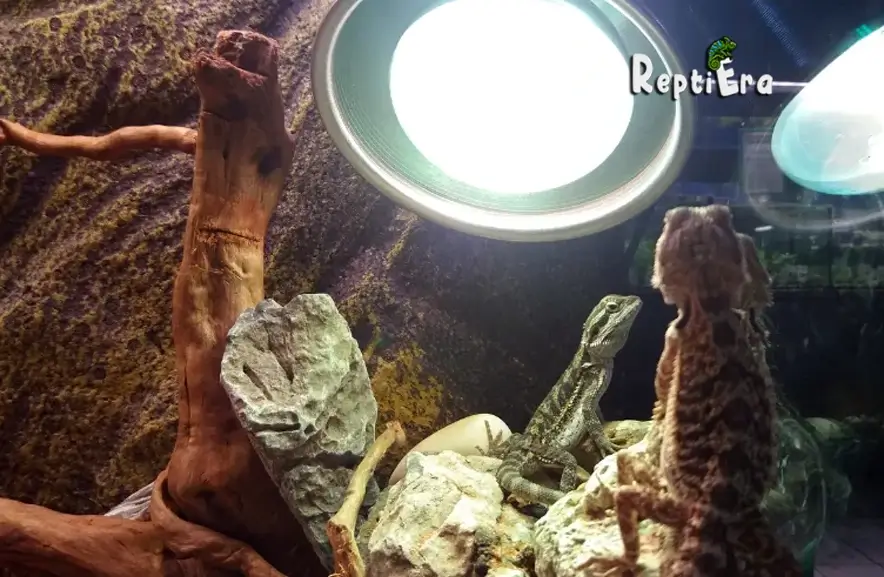

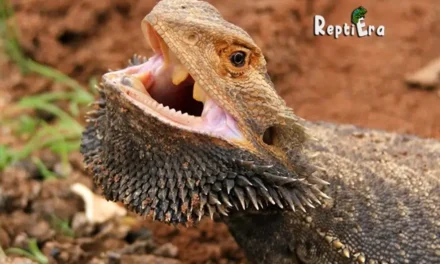
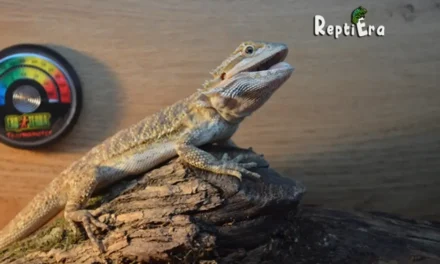
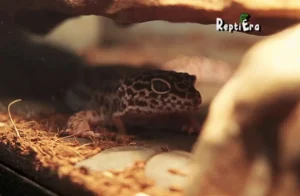

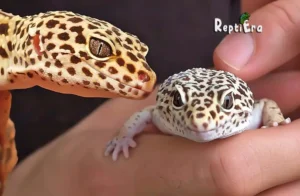

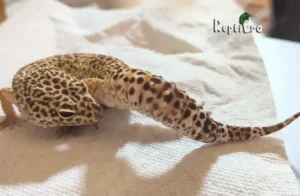
Howdy! I’m at work browsing your blog from my new iphone 4! Just wanted to say I love reading through your blog and look forward to all your posts! Keep up the superb work!